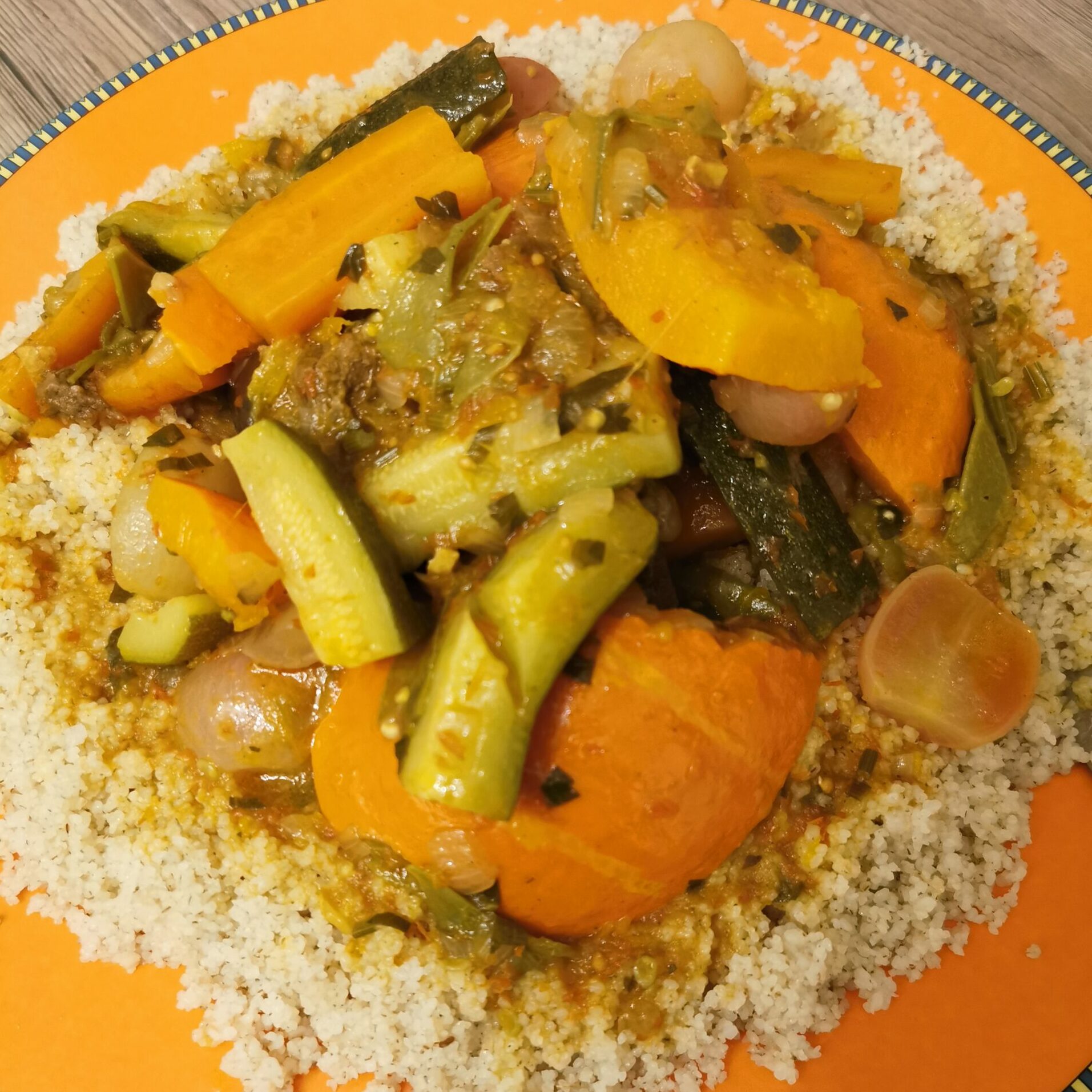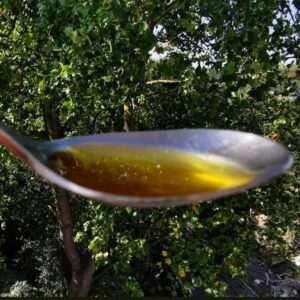2 in 1 vegan wholefood-couscous and cabbage soup in one dish
Cabbage of any kind is absolutely insanely healthy. It detoxifies, makes you lean and is perhaps the vegetable for women par excellence.
So I’m happy introduce you to:


The couscous-prepared vegetables are simply the tastiest cabbage soup available. And so it fits in perfectly with us: guests who like to eat traditional Moroccan food enjoy their couscous and who pays attention to a special diet, does not feel excluded. The cabbage soup tastes the same, just without the couscous. Just perfect!
Couscous Recipe
The couscoussiere
What’s this?
Couscous is traditionally prepared in the couscoussière, a special couscous pot. The couscous comes in an essay on the vegetables. Through the holes in the bottom of the essay, the vegetable steam rises and the couscous gets the perfect aroma. This is certainly the surest way to put the perfect dish on the table. However, also quite labor-intensive, since the vegetable steam is not enough to cook the couscous. Therefore, the couscous must be repeatedly placed in a separate bowl and watered there with water and mixed gently. But more about that right now.
My recommendation for beginners: It works without synonymous
But if you have never cooked couscous, I even recommend cooking it in two pots instead of the couscous. The vegetables exactly as described below and the couscous similar to how you prepare rice. On most packs couscous is also an exact guide how much water and how long it can be prepared exactly in this easier way. To be on the safe side, make sure to buy a couscous “with instructions” when buying. So you can approach, try out, if it tastes you and your family at all and then consider in peace, whether you want to buy a Couscoussière.
ingredients for 4 people
300-500 g couscous (I take whole grains, you can take others too, beginner ones with exact instructions on the package.) The perfect amount of water and cooking time varies from instant couscous to whole-couscous and is very important for a successful result !)
TIP: If you still have some left, the couscous can be frozen if necessary.
500-750 ml of cold water
2 onions
3 toes of garlic
about 200 g of tomatoes
400 g of chickpeas soaked overnight (if you want to speed up until the food is ready, leave out chickpeas or canned peas)
a few leaves of white cabbage
1-2 kohlrabi
3-5 carrots = carrots
1 eggplant
1 zucchini
1 Hokkaido pumpkin (which we like the most, you can also take another)
Also possible are radish, rutabaga, parsnip and similar vegetables
fresh parsley to taste, at least a handful
fresh coriander (TIP: before buying, smell it once, some love coriander, others you can chase with it, then just let it go)
fresh ginger
about 2 teaspoons Harissa (CAUTION sharp, maybe take a little less the first time)
about 1 tsp pepper
about 2 teaspoons of salt (0.5 for the couscous and 1.5 teaspoons for the vegetables)
about 1 ts turmeric (which is super healthy, someone is sick in the family, I give more turmeric than usual)
about 1 teaspoon ground coriander seeds
1 pinch of saffron
1 pinch of cinnamon
0.5 teaspoon paprika sweet
about 12 tablespoons cold-pressed, extra virgin olive oil (of which 5 tablespoons for the couscous)
TIP: The recipe can be varied in many ways without losing its taste. You can also cook it if you are missing a vegetable.
preparation
Soak the chickpeas the day before. Drain in a sieve and rinse once.
Puree the tomatoes with the garlic cloves, ginger and harissa. If you still can, you can also puree the coriander seeds and the pepper.
Bismillah …
Cover the soil with water in a large pot and heat. Add the onions. Add spices and fry everything (in the water!), Stirring constantly, so that nothing burns.
Deglaze with the pureed tomatoes and add the chickpeas. Simmer briefly. Add water.
Simmer for at least 1 hour (this step is only necessary if you have soaked dry chickpeas.) With canned chickpeas or if you’re cooking without any chickpeas, you can go straight ahead.)
Put the couscous in a shallow bowl and add just enough cold water to cover the couscous. Mix with your fingers, so that there is water everywhere. Let it go for a while
Meanwhile, roughly cut the white cabbage and place it in the pot.
Loosen the couscous again with your hand and add it to the attachment. Remember the time!
Peel carrots and kohlrabi and cut into large pieces in the pot.
Now cut the eggplant and zucchini and add.
20 minutes after the couscous came into the bowl, pour it back into the bowl, pour 100-125 ml of water (it should not be too wet, but there must be a little bit of water everywhere), half a tsp of salt and the 5 EL olive oil, mix thoroughly. Best with your hands, but if it is too hot for you, you can also take a fork. The couscous has to be nice and relaxed again.
Back in the tower. Watch the clock again.
Put the Hokkaido squash into the pot as the last vegetable. Chop the fresh parsley and coriander and add.
20 minutes after the couscous came into the bowl, put it back in the bowl and see if it’s cooked. Good, but careful mix. Do not knead! If he should not be even, a little more, this time add hot water and again for a few minutes in the essay.
Similar to noodles or rice, the couscous should still have bite, so “al dente” be served.
As soon as the couscous is cooked, decorate it on a large plate (it is traditionally served and eaten by everyone present from a plate with a spoon). In the middle a Kuhle. There, the vegetables come in nicely prepared and then with the sauce of the vegetables (before serving again and again to taste, if enough salt and oil is on it or it is spicy enough) gently doused. Argan oil or a particularly high-quality olive oil is still cold.
Remember to say bismillah before dinner and to be grateful for everything that is available to us!
cabbage soup
For those who want cabbage soup, fill a soup bowl with the vegetables and sauce and decorate with fresh garden herbs.


